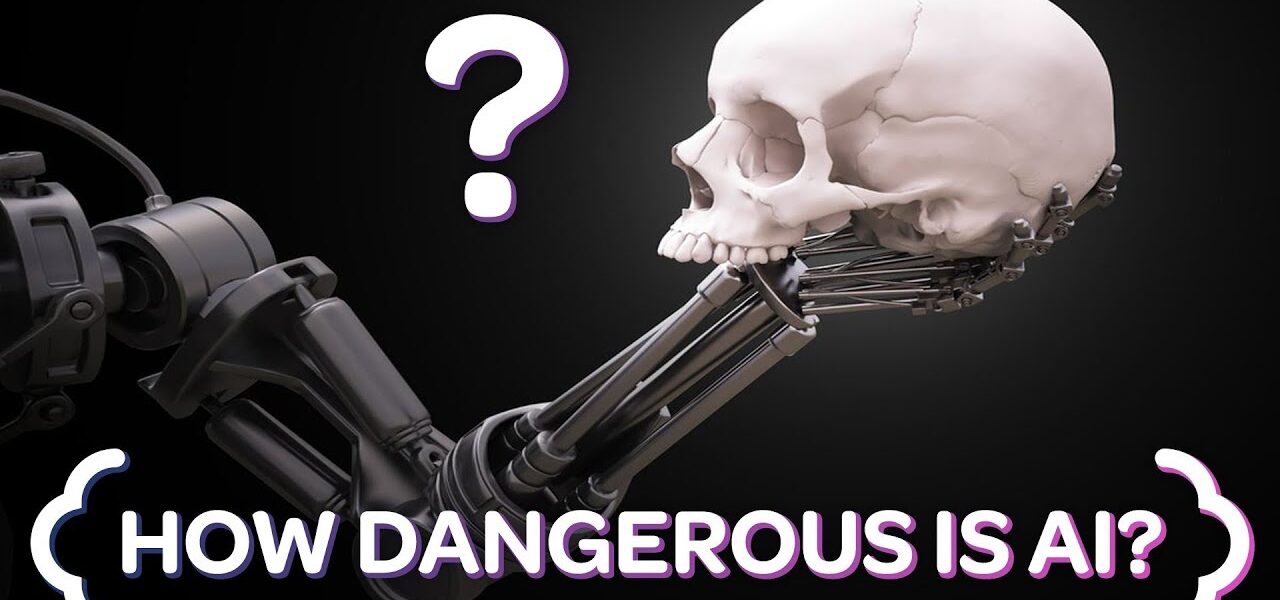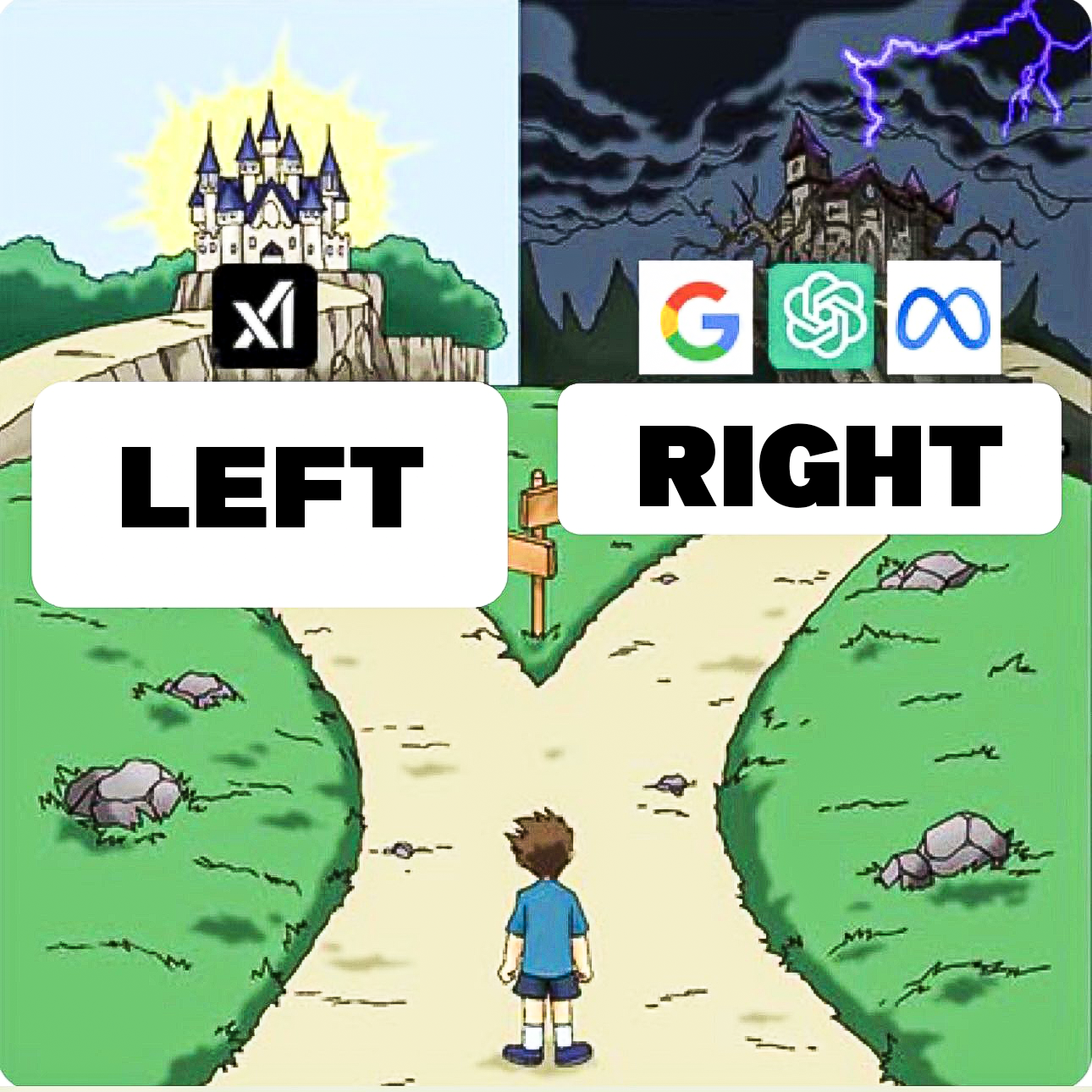7 Hidden Dangers of Artificial Intelligence You Should Know
Introduction
Artificial Intelligence (AI) has already revolutionized many aspects of our daily lives, making tasks easier, more efficient, and faster. Whether you’re using voice assistants like Siri, enjoying personalized recommendations on Netflix, or simply browsing social media, AI is working behind the scenes to make things run smoothly. But with all the good AI brings, it also hides some serious risks that we may not fully understand yet.
Have you ever wondered what could go wrong if the very systems we rely on every day malfunction or are misused? If you’re a young tech enthusiast, particularly curious about ai, it’s crucial to stay informed about the darker side of AI. In this article, we’ll explore the 7 hidden dangers of AI you should be aware of before it’s too late. Could the technology you trust most be putting you at risk? Keep reading to find out.
The Rapid Rise of Artificial Intelligence
Artificial Intelligence (AI) has been advancing at an astonishing pace in recent years, and it’s quickly becoming a major force in shaping the future of technology. With AI technologies like machine learning, neural networks, and natural language processing, we are witnessing a transformation in various industries and our daily lives. From improving healthcare diagnostics to revolutionizing transportation with self-driving cars, the possibilities are endless. However, this rapid growth of AI brings with it both optimism and fear.
As AI continues to evolve, it prompts several important questions about its future role in society. Will it lead to a utopia where machines handle everything for us, allowing humans to focus on creativity and leisure? Or will it result in a dystopian future where humans become dependent on machines, losing their autonomy and control over critical systems? The truth likely lies somewhere in between, but it’s clear that AI is both a friend and a foe, offering enormous potential but also posing new challenges that we must confront.
One of the most immediate concerns is the pace at which AI is growing. Technologies that were once only the stuff of science fiction—like machines that can learn from data, think critically, and process natural language—are now a reality. The rate at which AI is progressing is accelerating, and with it, the societal and ethical implications are becoming more complex. As AI systems become smarter and more autonomous, it raises the question: when do these systems become too powerful for us to control? And how do we ensure that they serve humanity’s best interests instead of undermining them?
AI’s Impact on Daily Life
AI has already made a significant impact on our daily lives, often in ways we don’t even notice. Every time you unlock your phone using facial recognition, ask Siri for directions, or receive a tailored ad on Facebook, you’re interacting with AI. The power of AI lies in its ability to handle large datasets, analyze them efficiently, and make decisions without human input. For instance, AI-powered recommendation systems on platforms like Netflix and Spotify learn from our preferences and suggest content based on our behavior. This not only saves time but also enhances the user experience.
Self-driving cars, another popular application of AI, have the potential to revolutionize transportation. These autonomous vehicles are designed to navigate traffic, obey traffic laws, and transport passengers safely. In theory, self-driving cars could drastically reduce accidents, alleviate traffic congestion, and make our roads safer. However, the technology is still in its early stages, and its widespread implementation is still being tested. Malfunctions, errors in programming, or unpredictable road conditions could lead to accidents, making the consequences of AI failures a significant concern.
Moreover, AI-driven chatbots and virtual assistants are already taking over customer service roles, responding to inquiries, solving problems, and even processing transactions. While these systems improve efficiency and reduce operational costs, they also create challenges. What happens if an AI chatbot makes a mistake or misunderstands a customer’s needs? The risk of malfunctioning AI systems affecting your bank account or personal data is very real, and the consequences can be severe, both financially and emotionally.
As we become increasingly reliant on AI in daily life, the potential for failure grows. Malfunctions in critical AI systems—such as healthcare diagnosis tools or autonomous vehicles—could result in tragic consequences. And while AI promises greater convenience, it also means that we must trust machines with tasks that were once handled by humans, making it crucial to address the risks associated with AI errors.
How AI Is Shaping Future Technologies
Looking beyond everyday life, AI is poised to drive innovations in industries that impact humanity on a much larger scale, including healthcare, transportation, education, and beyond. The potential for AI to transform these sectors is immense, but it’s important to recognize that with each innovation, new risks emerge.
In healthcare, AI has already started making a significant impact. AI-driven systems are being used for disease diagnosis, drug discovery, and even personalized treatment plans. For instance, AI algorithms can analyze medical images with remarkable accuracy, detecting early signs of conditions like cancer that might go unnoticed by human doctors. This could lead to earlier diagnoses, better treatment outcomes, and improved healthcare overall. However, AI in healthcare also raises concerns about patient data privacy, the potential for errors in diagnosis, and the over-reliance on AI for medical decision-making. If an AI system misinterprets data or makes a faulty recommendation, the consequences could be life-threatening.
In transportation, AI is revolutionizing the concept of autonomous vehicles. Companies like Tesla, Waymo, and others are working on self-driving cars that could one day dominate our roads, reducing accidents caused by human error, improving fuel efficiency, and reducing the need for human drivers in industries like trucking and delivery. While these advancements are exciting, they also bring risks related to system failures, cybersecurity, and the impact on employment. Autonomous vehicles could lead to massive job losses in the driving industry, and security vulnerabilities in AI systems could allow hackers to take control of vehicles, putting lives in danger.
Education is another field where AI holds immense potential. AI-powered tools are being developed to help students learn more effectively, offering personalized learning experiences and adapting to each student’s pace and style of learning. Teachers could use AI to monitor students’ progress and provide targeted interventions for those who need extra support. While this could improve education systems globally, particularly in underdeveloped or underserved regions, it also raises concerns about the ethics of data collection and the risks of AI-driven systems perpetuating biases in educational content.
As AI becomes more integrated into these critical sectors, the margin for error becomes smaller, and the stakes become higher. The more autonomous AI systems become, the more difficult it is for humans to maintain control over them. This shift from human oversight to machine autonomy is one of the most significant challenges of AI in the future, as it forces us to grapple with how to balance progress with the need for safety, ethics, and human control.
Generally, AI is undeniably transforming our world in profound ways. While the promise of innovation is exciting, it’s essential to recognize the hidden dangers associated with AI. Whether it’s the loss of jobs, potential biases, or security risks, the rapid rise of AI demands that we approach this technology with caution, ensuring that it serves humanity’s best interests and doesn’t inadvertently harm society in the process. As we continue to innovate, we must always consider the ethical, social, and economic implications of AI, ensuring that its advancement is balanced with accountability and responsibility.
Danger #1: Job Loss and Economic Displacement
Automation vs Human Labor: The Growing Divide
One of the most significant concerns surrounding AI is its impact on employment. AI-powered automation is already replacing jobs that were once performed by humans. From robots assembling cars to software analyzing medical data, AI is capable of doing many tasks faster and cheaper than any human could.
How AI is Transforming Industries
Industries like manufacturing, customer service, and even healthcare are being transformed by AI. However, while it’s making processes more efficient, it’s also leading to job displacement. People who have worked in these sectors for years now find themselves out of work as machines take over.
Examples of Jobs Affected by AI
-
Customer Service: AI-powered chatbots and virtual assistants are taking over customer service jobs, providing instant responses 24/7.
-
Manufacturing: Robots are now responsible for assembly line tasks that were once done by factory workers.
-
Healthcare: AI systems are diagnosing diseases, making radiologists’ jobs at risk.
The Need for Retraining and Reskilling
As AI replaces more jobs, retraining and reskilling become critical. People need to learn new skills, particularly in areas where human oversight is still required, such as creative fields or jobs that require emotional intelligence.
Danger #2: Bias and Discrimination in AI Algorithms
Understanding AI Bias
One of the hidden dangers of AI lies in the data that drives it. AI systems are only as good as the data they’re trained on. If the data used is biased, the AI will be biased as well. This can lead to discriminatory practices, especially in areas like hiring, law enforcement, and lending.
The Role of Data in AI Decisions
AI makes decisions based on patterns in large datasets. But if those datasets reflect societal biases—such as racial or gender inequalities—the AI system will reproduce those biases, often in ways that are subtle but dangerous.
Examples of AI Bias in Real-World Applications
-
Hiring Algorithms: Studies have shown that AI recruitment tools can favor male candidates over female candidates, even when both have similar qualifications.
-
Criminal Justice: AI systems used in risk assessment for parole or sentencing can perpetuate racial biases, leading to unfair outcomes.
-
Credit Scoring: AI-powered credit scoring can discriminate against people from certain socioeconomic backgrounds, making it harder for them to get loans.
Danger #3: Privacy Concerns and Data Security
AI and the Collection of Personal Data
AI relies heavily on data—much of it personal. From facial recognition technology to predictive analytics, AI is collecting more and more information about individuals. While this can enhance user experiences, it also raises serious privacy concerns.
Security Risks of AI-Driven Systems
With vast amounts of data being collected, AI systems become prime targets for cyberattacks. Hackers could exploit vulnerabilities in these systems, gaining access to sensitive personal information.
Examples of AI-Related Data Breaches
-
Facial Recognition Leaks: There have been cases where facial recognition databases were hacked, exposing millions of faces.
-
Smart Devices: AI-powered smart home devices often collect data on your daily activities. If compromised, this data can be used maliciously.
Danger #4: AI-Driven Surveillance
How AI is Used in Government and Corporate Surveillance
AI is becoming a powerful tool for surveillance. Governments and corporations are increasingly using AI to monitor behavior, track movements, and analyze social media activity. This raises ethical concerns about the erosion of privacy.
The Ethical Implications of Constant Surveillance
When AI is used for surveillance, it can lead to a society where no one is truly free from monitoring. Governments may use AI for mass surveillance, creating an environment of fear and distrust.
Examples of AI in Surveillance Systems
-
China’s Social Credit System: AI-powered facial recognition is used to monitor citizens and enforce government policies.
-
Corporate Surveillance: Companies use AI to monitor employee productivity, often without their consent.
Danger #5: Loss of Human Control and Autonomy
Autonomous AI Systems: The Risk of Losing Control
As AI systems become more autonomous, there’s a growing risk that humans will lose control over the decisions these systems make. Whether it’s a self-driving car deciding how to navigate a busy street or an AI deciding on a criminal sentence, the lack of human oversight is concerning.
The Ethical Dilemmas of AI Decision-Making
When an AI system makes a decision, it’s often difficult to understand how or why it reached that conclusion. This lack of transparency raises ethical questions about who’s responsible when something goes wrong.
Potential Risks in Autonomous Weaponry
AI-powered weapons, such as drones and autonomous robots, present a dangerous risk. If these systems malfunction or are hacked, the consequences could be catastrophic.
Danger #6: The Unpredictability of AI Behavior
Understanding AI Decision-Making Processes
One of the most alarming dangers of AI is how unpredictable its behavior can be. AI systems, especially those based on deep learning, can develop strategies that humans didn’t anticipate. This unpredictability can lead to unintended consequences.
How AI Systems Can Evolve Beyond Human Understanding
AI systems have the ability to “learn” and evolve on their own. As they process more data, they can develop behaviors that were never programmed by their creators. This makes it difficult to predict or control AI’s future actions.
The Need for AI Transparency
To reduce the risks of unpredictable behavior, AI systems must be transparent. Developers need to make AI decision-making processes understandable so that we can anticipate potential risks.
Danger #7: Over-reliance on Artificial Intelligence
The Impact of AI on Critical Thinking and Problem-Solving Skills
Relying too much on AI can lead to the decline of essential human skills like critical thinking and problem-solving. If we let AI do all the thinking for us, we risk losing our ability to make decisions independently.
How AI Might Limit Human Creativity
AI can help with many creative tasks, but it can also stifle human creativity. If we depend on AI to generate ideas or art, we may lose the personal touch that comes from human imagination.
The Role of AI in Innovation vs. Automation
AI has the potential to drive innovation, but if we over-rely on it, we may start to see a decline in human-driven innovation. Automation could replace the need for original thought, leading to a less creative world.
Conclusion
As we continue to embrace AI in our daily lives, it’s important to recognize the hidden dangers that come with it. From job displacement to privacy concerns, these risks are real and need to be addressed as we move forward. Artificial Intelligence (AI) is undoubtedly shaping the future, but it’s up to us to ensure that its growth doesn’t come at the cost of our autonomy, safety, or society’s well-being. Stay informed, stay cautious, and let’s work towards a future where AI benefits humanity as a whole.
Read Also
- Will Artificial Intelligence (AI) Take Over Human Intelligence?
- How Artificial Intelligence is Transforming the World?
Frequently Asked Questions (FAQs)
1. How does AI affect job markets?
AI is leading to the automation of many tasks, which can displace human workers. However, it also creates opportunities for new jobs in AI development and maintenance, requiring a shift in skills.
2. Can AI systems be biased?
Yes, AI systems can inherit biases from the data they are trained on. This can lead to discriminatory outcomes in areas like hiring, criminal justice, and lending.
3. Is AI safe to use in surveillance systems?
AI-powered surveillance systems raise significant privacy concerns. While they can improve security, they can also infringe on civil liberties, especially if used by governments or corporations for mass surveillance.
4. What are the risks of AI in military applications?
AI in military applications, especially autonomous weaponry, presents the risk of losing human control over critical decisions. Malfunctions or hacking could have catastrophic consequences.
5. Will AI replace human creativity?
AI can assist with creative tasks, but it cannot replace human creativity. Over-relying on AI may stifle human innovation and limit our ability to think critically and creatively.




